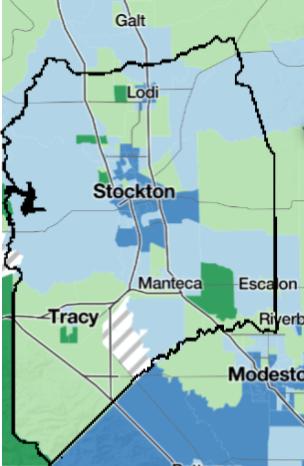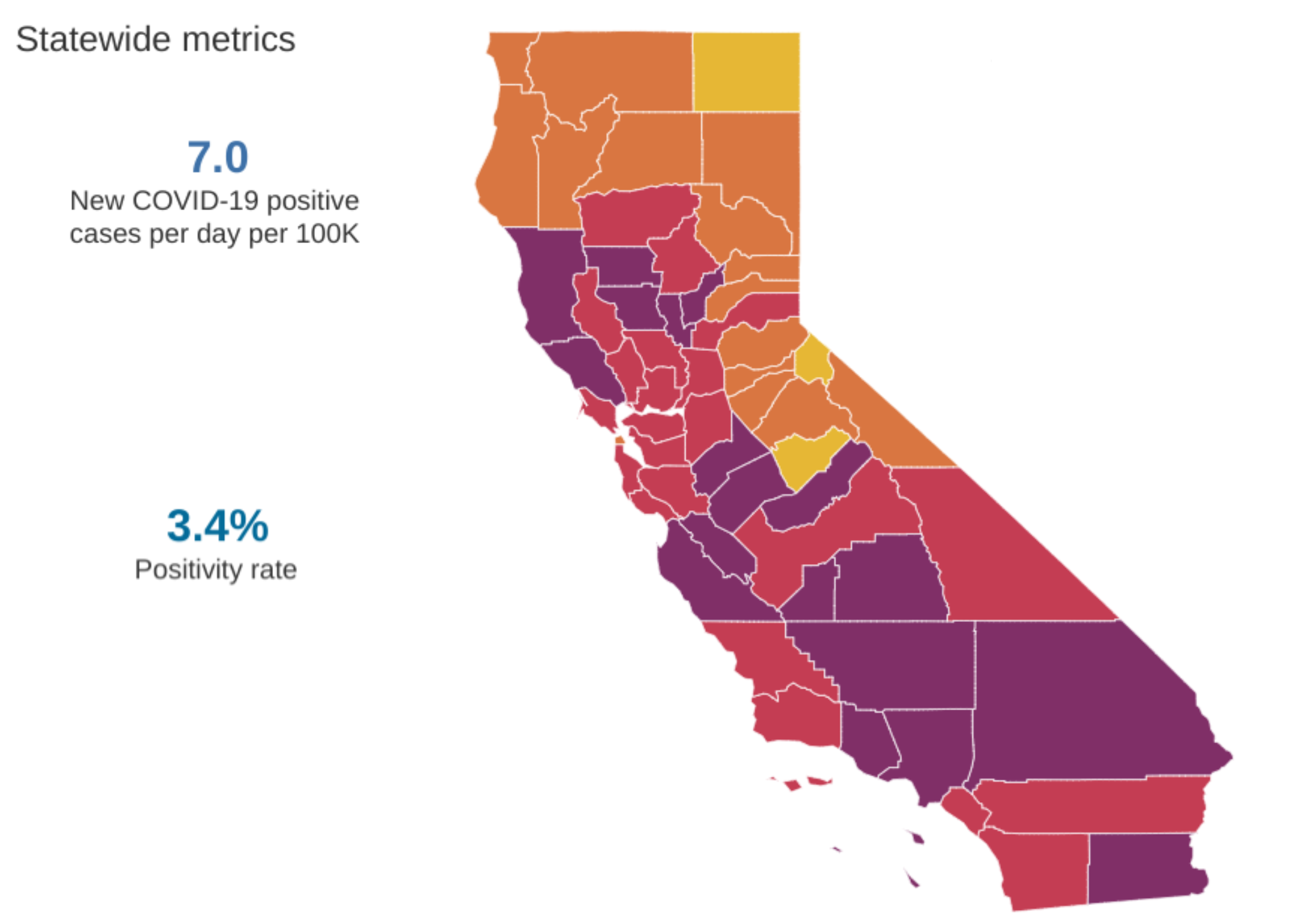Most of San Joaquin’s COVID Numbers Remain in Red Tier
October 6, 2020 at 7:40 pm
San Joaquin County did not qualify for the next tier forward, orange, in the state’s coronavirus ranking system this week. The county is currently in the red tier, which is the second-most restrictive. It moved from the most restrictive tier, purple, last week.
To move from red to purple, the county must have a maximum of 3.9 daily new cases per 100,000 people and a maximum positive test rate of 4.9%. In addition, a new measure known as the health equity metric came into play this week. For San Joaquin to advance, its positivity rate for the lowest quartile as given by the California Healthy Places Index must be at or less than 5.2%. These numbers must be maintained for at least two weeks.
The county’s positivity rate is 4.2%, which meets the requirement for the orange tier. However, the case rate per 100,000 people is still too high, at 6.4. The positivity rate for the bottom 25%, at 5.7%, also does not meet the next tier’s requirement. However, this is a substantial improvement from last week, when it was at roughly 8%.
The health equity metric is determined by the California Healthy Places Index (HPI). The HPI combines 25 characteristics for each census tract into a single score. The health equity metric measures the positivity rate for those living in neighborhoods in the bottom 25% of scores. Most of the neighborhoods in the lowest quartile in San Joaquin are in Stockton, with a few in Lodi as well.
The health equity metric only matters if a county wants to advance in the tiering system. That is, a county cannot move back a tier if its health equity measure does not meet the requirements of its current spot.
During a presentation to the San Joaquin County Board of Supervisors on Tuesday, San Joaquin County Public Health Officer Dr. Maggie Park suggested that testing sites provide Spanish interpreters in order to increase the number of tests given to people in the lowest HPI quartile. She also said that essential workers and at-risk individuals should get tested.
The neighborhoods in the bottom 25% HPI have been so “based on very longstanding inequities that have been around for years and years… access to housing, education, employment, transportation, food - many things that have been ingrained in these areas and that we can’t possibly change in a few weeks’ time.”, Park told the supervisors.


